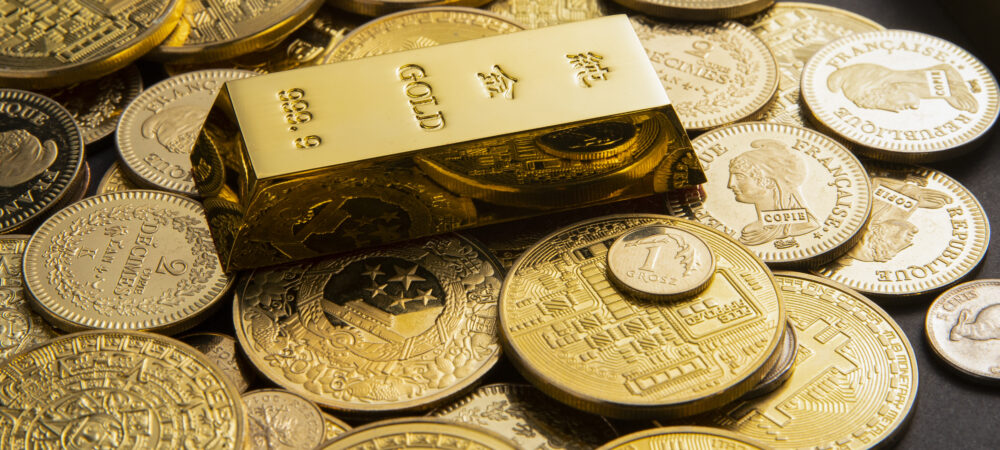Historically, an ounce of gold has equated to the price of a nice men’s suit. Gold, which is approaching $2,000, will today still buy you a quality suit unless you desire a more expensive Italian import or shop for a Canali on eBay like I do, where you can find them for about half that price. A century ago, an ounce of gold was worth about $20, the approximate cost of a durable man’s suit in 1920.
Gold is a commodity. Its price mimics inflation over time though fluctuating widely in the short term based upon speculation. When the Fed raised interest rates to stifle inflation in the early 1980s, gold dropped from over $600 to almost $300, contrary to the ubiquitous commercials that claim gold will always retain its value.
If you think inflation is going to rise, gold can be a hedge. If you decide to buy gold as a hedge against inflation, I suggest a futures contract or an ETF. What you want to avoid are gold coins because there are a host of people in the middle of these transactions. First, there are the miners who get the gold out of the ground; then the people who clean it and make it shiny; then there are the people who mint and protect it, followed by the brokers who sponsor all those commercials. You have to pay their commissions, both when you buy coins and again when you want to sell them. Of course, you need to store the coins somewhere, so you either buy a safe for your house or pay an intermediary for storage.
Never buy gold coins, unless you think the Russians or Chinese are going to attack and that flipping them a few coins is going to do you some good. If you want to own gold, buy the ETF (GLD or IAU) and hold it in your custodian account. Some people — like the preppers — get a sense of security from owning gold, the same way some feel more secure with a wad of cash in their drawer.
Aside from the preppers, there are the people with a lot of money who hoard gold and keep it somewhere close to their private jet in case they need to slip off to some protected island. These are usually people involved in some nefarious activity or dictators of a third world nation.
I concur with Warren Buffet’s appraisal of the value of gold when he says, “You could take all the gold that’s ever been mined and it would fill a cube 67 feet in each direction. For what that’s worth at current gold prices, you could buy all — not some — of the farmland in the United States, plus, you could buy 10 Exxon Mobil’s, plus have $1 trillion of walking-around money. Or you could have a big cube of metal. Which would you take? Which is going to produce more value?”
Some people enjoy gold as an adornment. The ring on my finger has a great emotional value for me, but has zero utility and is worth maybe $50 at a pawn shop. My wedding band for which I paid $100 hasn’t appreciated a cent since our vows. Gold doesn’t produce anything, pay a dividend or create any jobs, outside of its own mining industry. Its intrinsic value is its beauty, like flowers, but it has no tangible utility the way a company does. I’d prefer to own a company with growth potential, not something that hangs around my neck or sits in a bureau drawer.
A comparable folly is our fascination with diamonds. Where is the value in a diamond? It’s simply a shiny rock but for hundreds of years, it’s been valued for its presumed rarity and people are willing to pay outrageous prices for it. I can buy a piece of glass that looks just as pretty. Diamonds are able to cut things well and that’s about the extent of their usefulness, other than possibly making some people happy for a couple of weeks due to its sparkling nature.
“Gold gets dug out of the ground in Africa, or someplace. Then we melt it down, dig another hole, bury it again and pay people to stand around guarding it. It has no utility. Anyone watching from Mars would be scratching their head.”
—Warren Buffett

